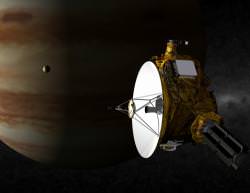 Although New Horizons’ main target is Pluto and the Kuiper Belt, it’ll have plenty of opportunities to do some science along the way. Next up, Jupiter. The spacecraft is now just a few weeks away from its closest approach to the gas giant, where it’ll capture some images but also receive a much needed speed boost.
Although New Horizons’ main target is Pluto and the Kuiper Belt, it’ll have plenty of opportunities to do some science along the way. Next up, Jupiter. The spacecraft is now just a few weeks away from its closest approach to the gas giant, where it’ll capture some images but also receive a much needed speed boost.
Continue reading “New Horizons Bearing Down on Jupiter”
Dwarf Planet Could Become a Comet
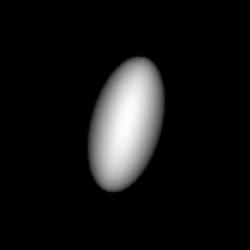 A small dwarf planet out past the orbit of Neptune could eventually become one of the brightest comets ever seen. Caltech professor Mike Brown – the discoverer of Eris – presented his calculations during the annual meeting of the American Astronomical Society held in Seattle in early January.
A small dwarf planet out past the orbit of Neptune could eventually become one of the brightest comets ever seen. Caltech professor Mike Brown – the discoverer of Eris – presented his calculations during the annual meeting of the American Astronomical Society held in Seattle in early January.
Continue reading “Dwarf Planet Could Become a Comet”
Looking Down on Mars Pathfinder
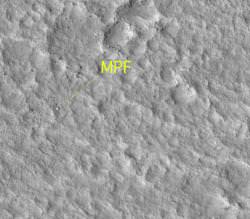 Remember the Mars Pathfinder? That plucky little rover that crawled around the surface of Mars back in 1997? Well, the new Mars Reconnaissance Orbiter’s powerful camera has found it again on the Martian terrain. It’s time to relive those days of early Martian exploration.
Remember the Mars Pathfinder? That plucky little rover that crawled around the surface of Mars back in 1997? Well, the new Mars Reconnaissance Orbiter’s powerful camera has found it again on the Martian terrain. It’s time to relive those days of early Martian exploration.
Continue reading “Looking Down on Mars Pathfinder”
Comet McNaught Blazes Through SOHO’s View
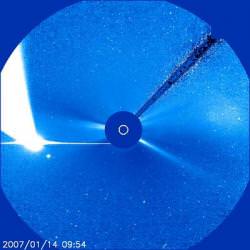 Although it’s viewed more than 1,000 comets, NASA and ESA’s Solar and Heliospheric Observatory has never seen anything like Comet McNaught.
Although it’s viewed more than 1,000 comets, NASA and ESA’s Solar and Heliospheric Observatory has never seen anything like Comet McNaught.
Continue reading “Comet McNaught Blazes Through SOHO’s View”
Colliding White Dwarfs Could Create a Supergiant Star
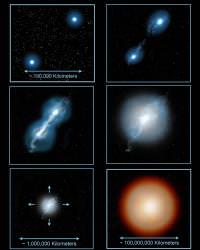 Of all the stars in our galaxy, two classes, known as hydrogen-deficient and R Coronae Borealis are extremely rare. Only a few dozen have been discovered in our entire galaxy. And unlike most of the stars out there, they have almost no hydrogen. Instead, they have abnormally high quantities of a rare isotope of oxygen.
Of all the stars in our galaxy, two classes, known as hydrogen-deficient and R Coronae Borealis are extremely rare. Only a few dozen have been discovered in our entire galaxy. And unlike most of the stars out there, they have almost no hydrogen. Instead, they have abnormally high quantities of a rare isotope of oxygen.
Continue reading “Colliding White Dwarfs Could Create a Supergiant Star”
Superstrings Could Be Detectable As They Decay
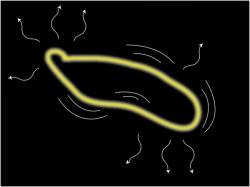 One of Einstein’s predictions for relativity is the concept of gravity waves; these are emitted whenever massive objects move. The more massive the object the stronger the gravity wave.
One of Einstein’s predictions for relativity is the concept of gravity waves; these are emitted whenever massive objects move. The more massive the object the stronger the gravity wave.
Continue reading “Superstrings Could Be Detectable As They Decay”
NASA Panel Will Investigate Mars Global Surveyor’s Disappearance
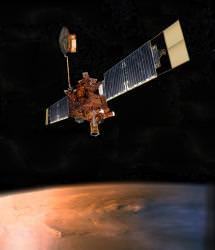 Although it lasted years longer than anyone ever expected, the disappearance of NASA’s Mars Global Surveyor spacecraft is still a mystery the agency wants to investigate. The agency has created an internal review board to review the spacecraft’s final days and recommend any new processes or policies that could improve future spacecraft.
Although it lasted years longer than anyone ever expected, the disappearance of NASA’s Mars Global Surveyor spacecraft is still a mystery the agency wants to investigate. The agency has created an internal review board to review the spacecraft’s final days and recommend any new processes or policies that could improve future spacecraft.
Continue reading “NASA Panel Will Investigate Mars Global Surveyor’s Disappearance”
Podcast: Comets, Our Icy Friends from the Outer Solar System
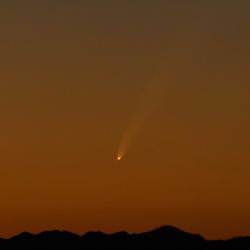 The sudden brightening of Comet McNaught has reminded us what a treat it can be to see a comet with the unaided eye. A diffuse ball with a long tail stretching across the sky. There’s nothing else in the night sky that can compare to a bright comet. But what are these objects, where do they come from, and what can they tell us about the formation of the Solar System?
The sudden brightening of Comet McNaught has reminded us what a treat it can be to see a comet with the unaided eye. A diffuse ball with a long tail stretching across the sky. There’s nothing else in the night sky that can compare to a bright comet. But what are these objects, where do they come from, and what can they tell us about the formation of the Solar System?
Continue reading “Podcast: Comets, Our Icy Friends from the Outer Solar System”
Comet McNaught is Now Visible in the Daytime!
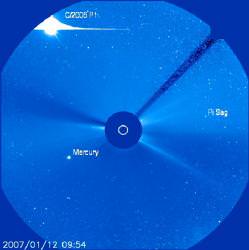 Okay, this is unprecedented. The really bright Comet McNaught that I mentioned a few days ago is now so bright that you can see it in the daytime. It’s extremely close to the Sun, so you need a way that you can block the glare of the Sun, but still see the sky.
Okay, this is unprecedented. The really bright Comet McNaught that I mentioned a few days ago is now so bright that you can see it in the daytime. It’s extremely close to the Sun, so you need a way that you can block the glare of the Sun, but still see the sky.
Continue reading “Comet McNaught is Now Visible in the Daytime!”
Hubble Sees a Hypergiant Star Nearing Death
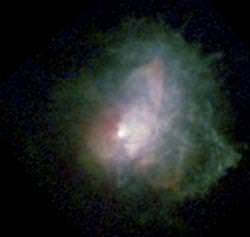 VY Canis Majoris, located about 5,000 light-years away, is no ordinary star; it’s a supergiant, containing 30 to 40 times the mass of our own Sun. And it’s so luminous it’s also considered a hypergiant, shining 500,000 times as bright as the Sun. And it’s big… really big. If this star lived in our Solar System, its surface would extend out to the orbit of Saturn.
VY Canis Majoris, located about 5,000 light-years away, is no ordinary star; it’s a supergiant, containing 30 to 40 times the mass of our own Sun. And it’s so luminous it’s also considered a hypergiant, shining 500,000 times as bright as the Sun. And it’s big… really big. If this star lived in our Solar System, its surface would extend out to the orbit of Saturn.
Continue reading “Hubble Sees a Hypergiant Star Nearing Death”
